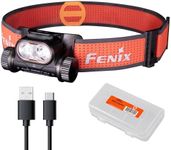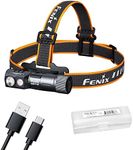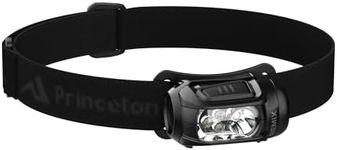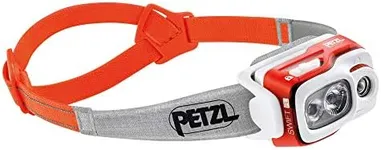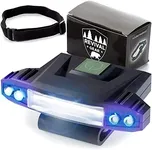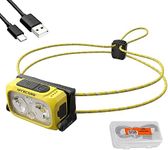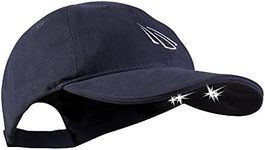Buying Guide for the Best Head Torches
Choosing the right head-torch can make a significant difference in your outdoor adventures, whether you're hiking, camping, running, or working in low-light conditions. The right head-torch will provide you with the necessary illumination, comfort, and battery life to suit your specific needs. Here are some key specifications to consider when selecting a head-torch.Brightness (Lumens)Brightness, measured in lumens, indicates how much light the head-torch emits. This is important because it determines how well you can see in the dark. Head-torches typically range from 50 to over 1000 lumens. For general camping and close-up tasks, 100-200 lumens is usually sufficient. For trail running or hiking, 200-400 lumens is recommended. For more intense activities like caving or search and rescue, you might need 500 lumens or more. Choose a brightness level based on the activities you plan to use the head-torch for.
Beam DistanceBeam distance refers to how far the light can reach, which is crucial for seeing ahead on trails or spotting distant objects. Head-torches can have beam distances ranging from 20 meters to over 200 meters. For general use, a beam distance of 50-100 meters is usually adequate. For activities requiring long-range visibility, such as night hiking or search and rescue, look for a beam distance of 150 meters or more. Consider the environments and distances you need to illuminate when choosing the beam distance.
Battery LifeBattery life indicates how long the head-torch can operate before needing a recharge or new batteries. This is important for ensuring your head-torch lasts through your activities. Battery life can range from a few hours to over 100 hours, depending on the brightness setting and battery type. For short trips or occasional use, a head-torch with 5-10 hours of battery life may suffice. For extended trips or frequent use, look for a head-torch with 20 hours or more. Consider how long you'll need the light and whether you'll have access to recharge or replace batteries.
WeightWeight is an important factor for comfort, especially if you'll be wearing the head-torch for extended periods. Head-torches can weigh anywhere from 50 grams to over 300 grams. For activities like running or hiking, a lightweight head-torch (under 100 grams) is preferable to avoid discomfort. For activities where weight is less of a concern, such as camping or working, a heavier head-torch with more features might be acceptable. Choose a weight that balances comfort and functionality for your intended use.
Water ResistanceWater resistance is crucial if you plan to use your head-torch in wet or rainy conditions. This is measured by the IP (Ingress Protection) rating. An IPX4 rating means the head-torch is splash-resistant, suitable for light rain. An IPX7 rating means it can be submerged in water up to 1 meter for 30 minutes, suitable for heavy rain or accidental drops in water. For general outdoor use, an IPX4 rating is usually sufficient. For more extreme conditions, consider a higher IP rating. Choose a water resistance level based on the environments you'll be in.
Modes and FeaturesModes and features refer to the different lighting options and additional functionalities a head-torch may offer. Common modes include high, medium, low, and strobe. Some head-torches also offer red light mode, which preserves night vision. Features like adjustable beam focus, tilt mechanism, and lock mode can enhance usability. For basic use, a head-torch with a few modes may be sufficient. For more specialized activities, look for additional features that can provide versatility and convenience. Consider what modes and features will be most useful for your needs.

